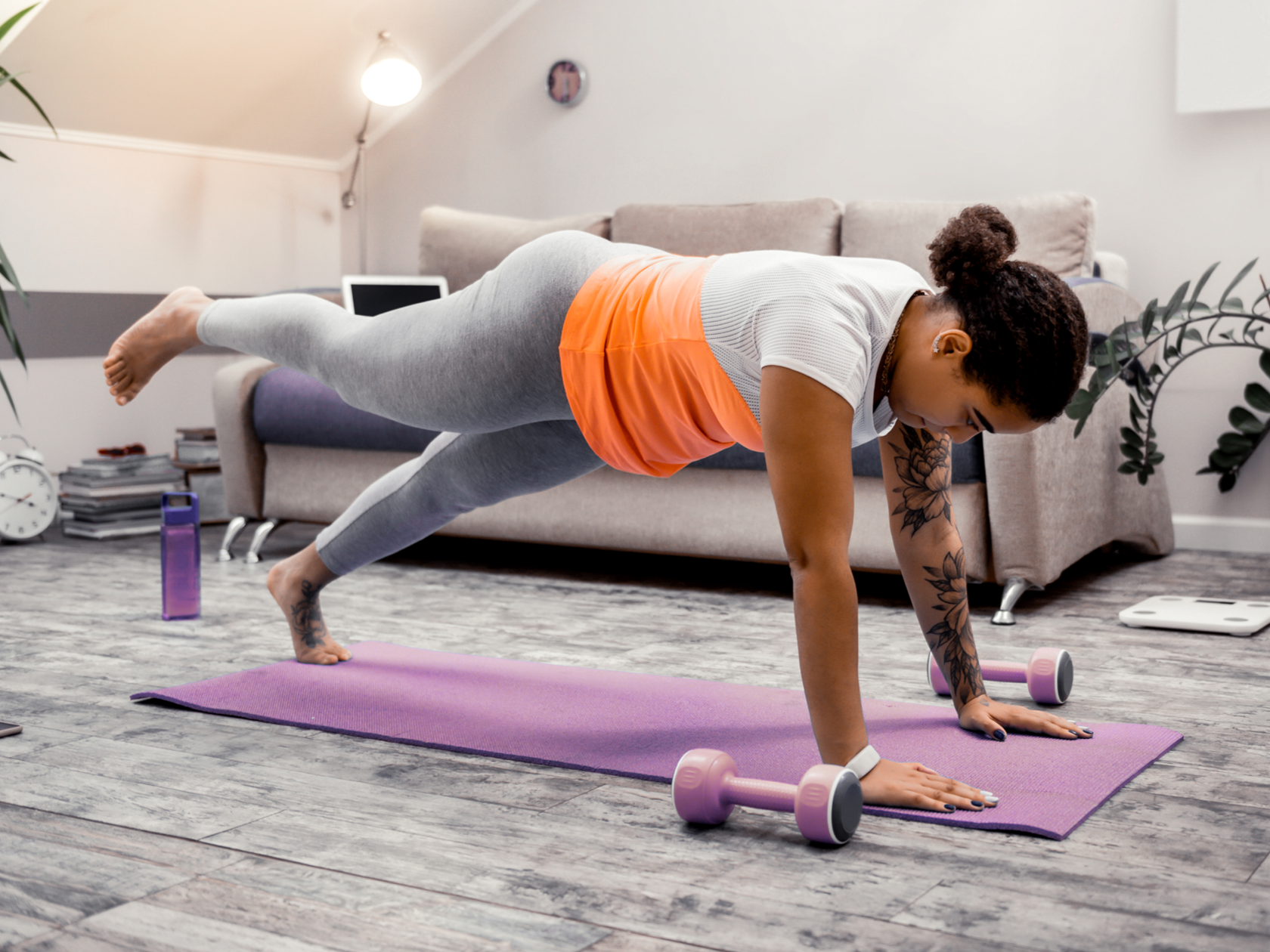If you want to add weights to your training, but don’t know what size dumbbells to buy, look no further.
Bodyweight training has been a saviour throughout the pandemic. For many people, lockdown was a chance to kickstart the fitness routine that they’ve always dreamed of having. Given that they had an extra hour or so spare – save their commute, long meetings and late-night drinks – beginners have dived into HIIT and weight-free training. Even those who were previously into weight lifting have turned to equipment-free workouts, mainly due to the fact that they couldn’t find kit to buy for love nor money.
Whatever the reason for your reliance on bodyweight training, now might be the time to start adding some extra resistance into your home workouts. But knowing what to lift is tricky. Is 4kg too light or too heavy? Do you need to buy a whole rack of dumbbells or is one weight versatile enough for all training?
You may also like
13 dumbbells and other workout items that are available to buy online
“There’s no clear-cut answer for this, at it really depends on what your goals are, if you’re new to weight training and if you have any injuries,” says personal trainer Zara Ozard. “It’s worth bearing in mind that you might be stronger in your lower body versus your upper body, too.”
A good weight, she explains, is one that allows you to complete your set with the muscles feeling close to fatigue (that is, not being able to do any more reps). “My advice is to ensure that you’ve developed good form and technique in your bodyweight exercises first, so when you’re ready to add weights you don’t injure yourself. Then, start out slow and light, and build up your capabilities,” Zara explains.
What size weights should beginners use for home workouts?
Total beginners, who have only trained at home with no guidance from a personal trainer, might want to start with weights anywhere from 2kg-6kg, says Zara. “You don’t want to start too heavy and end up losing confidence when you can’t perform exercises,” she says.
If you have been doing bodyweight training for a while and already feel pretty strong (those press-ups really pay off, you know), you might be ready to step up to medium-sized weights. For that, you could opt for dumbbells that weigh around 6-10kg. Anything over that would be classed as ‘heavy’ when it comes to your home workouts, so those who regularly train in the gym might want to opt for dumbells that weigh around that.
Dumbbells in their teens may sound light for those who regularly squat 40kg plus at the gym, but remember that a barbell is different territory. Squatting with a dumbbell will require you to get the weight onto your shoulders or hold it at your chest, whereas the racks in the gym are designed to take this extra strain off the movement.
Other things to bear in mind are that you might be stronger in your lower body exercises than your upper body exercises (for example, a squat with 4kg dumbbells might not feel like much, but overhead pressing them could be tricky for you), and that isolation exercises will require lighter weights than compound movements (you will probably be able to row more than you can bicep curl, for instance).

Do I need lots of dumbbells?
Does all of this mean that you need to purchase a whole host of dumbbells in order to get the best workout? Not at all. “In an ideal world, you would have a range of weights because it would allow you to tailor every exercise to the perfect rep range and allow you weekly progression,” says Zara. But, this is not an ideal world. So if you can only find or afford one size weight then that’s totally fine – there are loads of different ways to progress using just the one dumbbell.
You may also like
The best weight training exercises you can do with small weights
“You can introduce new exercises and various training principles to make things more challenging,” says Zara. She suggests taking less rest between exercises to make the session more challenging on your body, slowing exercises down to increase the amount of time your muscles are under tension and performing single leg or arm exercises to isolate the muscles, as well as simply upping the number of sets and reps you do.
Source: Read Full Article
